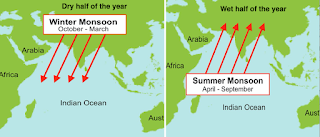This very happy looking dude (no wonder he is happy, he has two gorgeous babes sitting on his laps) is no other than the Vedic Sun God Surya. You could say he is positively "beaming" with pride and excitement..And I guess pretty glad to have few extra hands...
Ok who are the babes? Well that's complicated (like every threesome is)...Thankfully, we have Rig Veda, the ultimate Indian tabloid of the time to tell us all about it. Here it goes:
It all started when Tvastar, the Holy Artificer, the creator of cosmos, and few other things, threw a Svayamvara party for his daughter Saranyu...
Svayamvara, as the readers of Rig Vedas are well aware, is a special party during which a girl of marrying age is supposed to pick her future husband from the assembled eligible suitors...
Well, as our readers know, Saranyu was a stunner, so pile of good looking, rich and powerful young men attended her Svayamvara, all hoping to get her hand (and elbow, and shoulder and)...
Among the potential husbands was Surya, under the name of Vivasvan. Surya was hot, hot, hot...I mean he was sizzling...Not surprising for a sun god, some readers might say...And of course Saranyu, picked him. So they get married...
So, the newly weds had steamy passionate relationship full of hot sex...Surya was walking around beaming more and more, cause he got picked by such a stunner who is also great in bed...But then one day, after Saranyu gave birth to Ashvin twins, she suddenly decides to leave...
It turns out, Surya got too hot. And he was all: look at me, I'm so hot...blah blah blah...To the point where Saranyu couldn't stand him any more...But in fairness, what did Saranyu expect (I can hear some of our readers say). She married a sun god...Cause he was hot...
Anyway, before she left, Saranyu arranged "services" of a woman called Savarna, to replace her in Surya's bed. [Or maybe gods arranged this, it all happened all of a sudden before our reporters could get to the Surya's mansions]...Savarna was "similar" to Saranyu, but mortal...
Surya of course didn't notice the swap. [All he was interested was my body, Saranyu said later to our reporter. He didn't care about me as a person. So he was easily fulled by a body double]...And so he went on banging his gorgeous "wife". But Savarna bears him no children...
Saranyu in the meantime goes back to her father, Tvastar, complaining about Surya: He is just unbearable, I can't even look at him any more...Beaming, beaming, beaming...Uhhhh...
But her father basically tells her:
"What are you complaining about, you wanted a hottest guy you got the hottest guy...Go back to your husband...And as for the beaming, I'll give him a call and tell him to turn it down a notch...Ok? Good girl!"
[Men 😠, Saranyu later remarked]
So what's all this about...I think climate in India...The climate in India is pretty much hot all the time...The sun, Surya, rules the place...Hence the bling, and the babes...
Here is yearly temperature and precipitation for New Delhi...
The [super important] bit that changes twice a year, are the prevailing winds. During the summer, between Apr and Sep they blow from the sea northwards. And during the winter, between Oct and Mar they blow from the mountains southwards...
Summer winds bring rain. They make rivers swell and rush and make land fertile...
Winter winds bring drought. They make rivers dry out and make land barren...
I talked about these winds in my post "Ganesha"...
What does this have to do with Surya's wives?
Saranyu is the female form of the adjective saraṇyú, meaning "quick, fleet, nimble", used for wind and flowing water in the Rigveda. Saranyu has also been described as "the swift-speeding storm cloud"...
The name of her replacement Savarna, means "same-kind"...She is not the same as Saranyu, but similar to Saranyu...She is a wind, but not the same wind...
One of the main differences in the between the two, at least in Vedas, is that Saranyu is fertile while Savarna is barren...
Saranyu is the wet summer monsoon which makes the land fertile...
Savarna is the dry winter monsoon which makes the land barren...
I wonder if this is the reason that one of Surya's consorts is depicted with bare breasts (as in breastfeeding mother) and the other one with covered breasts...Don't know, but If I wanted to depict two Indian seasons, that's how I would do it...Sexy...🙂
PS: Tvastar did call Surya. This is the recording of the conversation obtained by one of our reporters:
"Son, my daughter came to me today, and burst my ear complaining about you...I am hoping you do understand that when my only daughter is unhappy, that makes me unhappy...And when I am unhappy someone usually gets hurt. You do understand that? Good. So I assume she will not come complaining again?"
Surya knew better than to mess with the godfather of the universe...See how temperatures drop after the end of the rain season...






















































